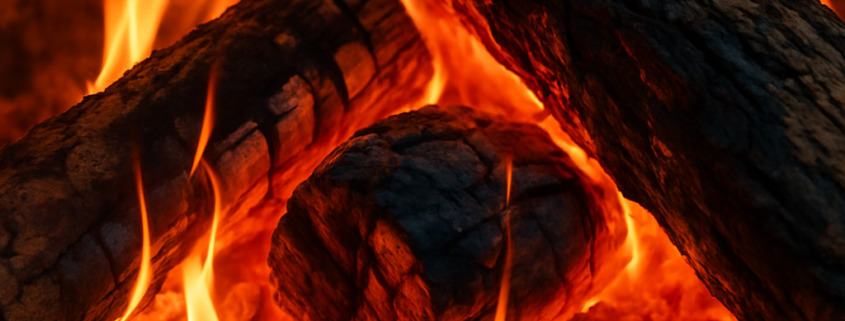It can be perplexing when one load of wood produces plenty of heat while another fails to burn that hot. You might therefore believe that all firewood is the same?
However, nothing could be further from the truth: firewood varies massively in quality.
There are proven techniques that will improve the heat output of your logs. In this article we discuss why proper storage matters, look at the different species available, and explain why you should never burn wet wood.
What causes firewood to burn differently?
If you are scratching your head, wondering why firewood from different suppliers varies so much in heat output, let us explain.
Wood species
You may have heard logs described as a “solid fuel”. While they remain a natural product, they behave just like any other fuel. What is important to remember is that different species possess different energy densities, which is why a hardwood such as oak can burn far longer than a softwood like pine or spruce.
Moisture content
This is often the deciding factor between a roaring fire and a dull, unimpressive burn. Some suppliers do not dry their logs adequately. In the rush to fulfil autumn and winter orders, they may deliver wood that still carries a high moisture content. Wet logs burn poorly, give off excessive smoke and soot, and can damage both your stove and the chimney liner—never mind upsetting the neighbours.
How the wood is cut
Cutting logs into smaller pieces exposes more surface area, making them far easier to dry.
Large, chunky logs that have not been properly seasoned or kiln-dried tend to stay wet and create excessive soot when burnt. When seasoning your own firewood, cut it small logs and stack it so that air can circulate freely.
Tips for maximising the efficiency and heat output of your logs
With the current cost-of-living pressures, everyone wants better value from their firewood. The following guidance will help:
Invest in proper storage
Leaving logs on the grass and covering them with a tarpaulin is inadequate.
The wood will absorb ground moisture and the plastic sheet will trap it and then it will be absorbed by the logs.
A purpose-built log store keeps the wood off the ground and should incorporate slatted sides or gaps for constant airflow.
Stack the logs neatly, leave spaces between them, and ensure the roof overhangs enough to protect against driving rain. Position the store where wind can blow right through it.
Buy kiln-dried logs
Don’t settle for cheap yet damp firewood. Choose a company that provides bone-dry, kiln-dried firewood with a moisture content below 20 %. Such logs ignite quickly, burn hotter, and last longer because you’re not wasting energy evaporating water.
Use a moisture meter
A small handheld meter costs very little and tells you instantly whether a log is ready to burn.
Aim for 20 % moisture or less; anything higher should go back into storage to dry further.
Rotate your stock
First in, first out.
Burn the oldest, driest logs first and keep newer deliveries at the back of the store so they have time to season.




Leave a Reply
Want to join the discussion?Feel free to contribute!